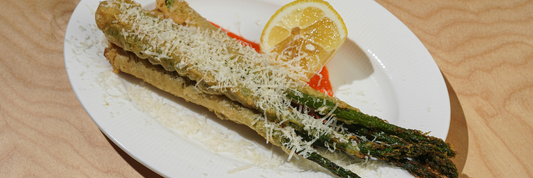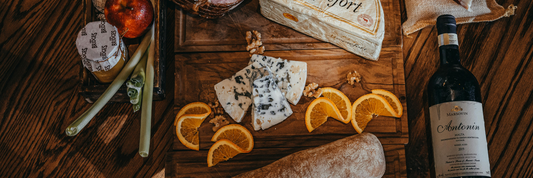In today’s North American market, sushi is no longer a niche dish, it’s a mainstream favorite. But today’s consumers, especially Millennials and Gen Z, are more discerning than ever. They want to know where the salmon in their sushi roll was sourced, how it was preserved, and even whether the packaging is eco-friendly.
This creates a challenge for sushi restaurants and food brands: how to deliver a refined dining experience while also proving safety and transparency.
At Kimecopak, we partner with F&B businesses on this journey. As a provider of sustainable packaging solutions, we understand that a sushi container is more than just a vessel, it’s a communication channel with customers. That’s why integrating technologies such as smart labels and QR codes on packaging is becoming an essential way for brands to share their story of sourcing, preparation, and food safety in a trustworthy and engaging way.
- Choosing Compostable vs. Recyclable Packaging for Sushi Restaurants
- How to Store and Transport Sushi without Compromising Freshness
- Ramen Market Outlook: Key Stats for Restaurant Owners in 2025–2030
What Are Smart Labels and QR Codes in Food Packaging?

Smart Labels – More Than Just a Sticker
Smart labels are next-generation labels that integrate technologies such as RFID, NFC, or QR codes, allowing brands to share far more information than traditional labels ever could. For sushi businesses, smart labels can:
- Display detailed sourcing information (e.g., which fishery or farm the seafood came from).
- Provide updates on storage conditions and freshness.
- Share nutritional values, usage instructions, and storage guidelines.
QR Codes – The Gateway to Brand Storytelling
Among these technologies, QR codes stand out because they are cost-effective, easy to implement, and highly versatile. With a single scan, customers can:
- Explore the farm-to-table journey of sushi ingredients.
- Learn about the brand story, its philosophy, sourcing practices, and sustainability commitments.
- Access loyalty programs, exclusive offers, or digital menus.
Unlike traditional labels that are limited by print space, smart labels and QR codes act as a “digital window” on sushi packaging, giving brands the ability to tell a complete story and build stronger emotional connections with customers.
Benefits of Smart Labels and QR Codes for Sushi Packaging

When integrated effectively, smart labels and QR codes in sushi packaging deliver powerful benefits:
- Food safety & freshness assurance: Customers can instantly check production dates, expiry dates, and storage conditions.
- Traceability: Essential for seafood, smart labels help verify sourcing and supply chain transparency.
- Building trust: Transparency fosters loyalty by showing customers that the brand is honest and proactive.
- Marketing opportunities: QR codes serve as a direct bridge from packaging to websites, social media, or loyalty platforms.
According to the Food Marketing Institute, more than 86% of shoppers believe transparency is one of the most important factors influencing repeat purchases. For sushi a premium product transparency is not just an advantage, it’s a passport to long-term success.
Packaging Challenges for Sushi Brands
Sushi is a product that embodies freshness, craftsmanship, and premium quality. However, its delicate nature creates unique challenges when it comes to packaging:
- Short shelf life: Sushi has one of the shortest shelf lives in the food industry, making it critical to communicate freshness and storage details clearly.
- Balancing premium image with sustainability: Today’s consumers expect both luxury presentation and eco-friendly packaging. Sushi brands often struggle to maintain a high-end look while avoiding single-use plastics.
- Authenticity and sourcing concerns: Customers want to know if the tuna is sustainably caught, if the rice is organic, and whether the ingredients truly match the “premium” label. Without transparency, brands risk losing trust.
This is where smart labels and QR codes become valuable tools helping sushi businesses build credibility while complementing eco-conscious packaging solutions like those offered by Kimecopak.
Steps to Implement Smart Labels in Sushi Packaging

Adopting smart packaging doesn’t have to be overwhelming. With the right approach, sushi brands can create a seamless, engaging customer experience:
- Choose the right QR code generator and platform
Opt for a reputable solution that allows you to update content dynamically, track scans, and integrate analytics. - Design user-friendly, scannable labels
Placement matters ensure the QR code is visible, easy to scan, and paired with a clear call-to-action (“Scan to learn more”). - Ensure compliance with food regulations
Information shared through QR codes must align with local food labeling laws and consumer safety guidelines. - Educate customers
Many customers are familiar with QR codes, but some still need encouragement. Add a short note or icon to guide them: “Scan for sourcing & freshness info.”
By combining smart labeling with sustainable sushi containers, brands can elevate both transparency and environmental responsibility.
Future of Smart Packaging in the Sushi Industry
Smart labels and QR codes are only the beginning. The next five years are expected to bring exciting innovations in sushi packaging:
- IoT-enabled freshness sensors: Imagine packaging that alerts customers if the sushi has been stored outside safe temperature ranges.
- Integration with loyalty programs and personalized offers: QR codes can become gateways to discounts, tailored promotions, or exclusive menu previews.
- Predictions for the next 5 years: As digital-savvy consumers demand transparency, sushi brands that adopt smart packaging early will be better positioned to differentiate themselves and build long-term loyalty.
For brands aiming to combine technology with sustainability, early adoption will be the key to staying competitive.
QR Code Wooden Utensils: Telling Your Product Story Through Technology
Conclusion
The sushi industry is evolving quickly. Customers expect freshness, authenticity, and transparency, all delivered in eco-friendly packaging. Smart labels and QR codes provide a powerful way to meet these expectations while creating new marketing opportunities.
Those who act now gain:
- A competitive edge through innovation and trust-building.
- The ability to future-proof their brand as digital-first consumer behavior grows.
- Stronger alignment with sustainability values, especially when paired with Kimecopak’s eco-friendly sushi packaging solutions.
At Kimecopak, we may not create smart labels or QR codes but we design premium, sustainable packaging that works seamlessly with these technologies. Together, they help sushi restaurants maintain quality, elevate customer experience, and build long-term brand loyalty.
FAQs on Smart Labels and Sushi Packaging
1. What information can QR codes show on sushi packaging?
QR codes can provide sourcing details, nutritional facts, storage instructions, brand stories, and even exclusive offers.
2. Are smart labels expensive for small sushi businesses?
No. QR codes, in particular, are low-cost and easy to implement, making them accessible even for small sushi shops.
3. How do smart labels improve food safety?
By sharing real-time data such as production date, expiration, and storage conditions, smart labels help ensure customers consume sushi at its freshest and safest state.
4. Can QR codes work with eco-friendly packaging?
Absolutely. QR codes can be printed directly onto paper-based, recyclable, or compostable packaging, making them fully compatible with sustainable sushi containers.
-
LEARN MORE about How "Subscribe for a Happy Life" will benefits your business HERE!
-
LEARN MORE about Kim Vu, sharing on the challenges she faced as a former restaurant owner, and how she overcame them to create KimEcopak HERE!




